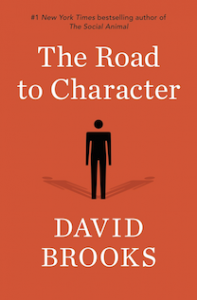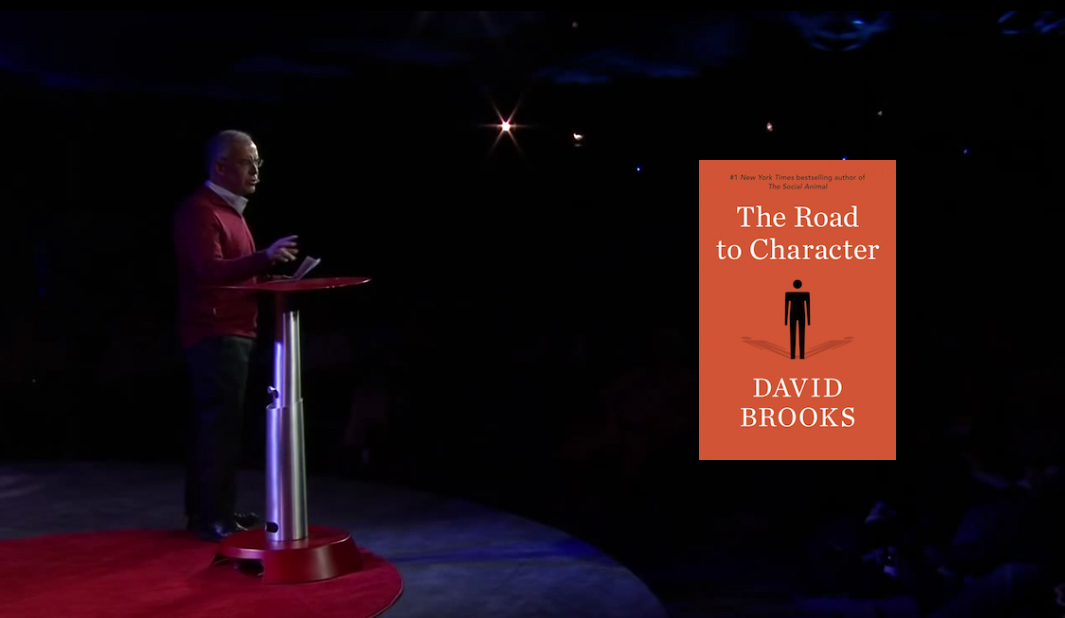 With the wisdom, humor, curiosity, and sharp insights that have brought millions of readers to his New York Times column and his previous bestsellers, David Brooks has consistently illuminated our daily lives in surprising and original ways. In The Social Animal, he explored the neuroscience of human connection and how we can flourish together. Now, in The Road to Character, he focuses on the deeper values that should inform our lives. Responding to what he calls the culture of the Big Me, which emphasizes external success, Brooks challenges us, and himself, to rebalance the scales between our “resumé virtues”—achieving wealth, fame, and status—and our “eulogy virtues,” those that exist at the core of our being: kindness, bravery, honesty, or faithfulness, focusing on what kind of relationships we have formed. “This book was my favorite this year”, “I love David Brooks! The Road to Character was fabulous”.
With the wisdom, humor, curiosity, and sharp insights that have brought millions of readers to his New York Times column and his previous bestsellers, David Brooks has consistently illuminated our daily lives in surprising and original ways. In The Social Animal, he explored the neuroscience of human connection and how we can flourish together. Now, in The Road to Character, he focuses on the deeper values that should inform our lives. Responding to what he calls the culture of the Big Me, which emphasizes external success, Brooks challenges us, and himself, to rebalance the scales between our “resumé virtues”—achieving wealth, fame, and status—and our “eulogy virtues,” those that exist at the core of our being: kindness, bravery, honesty, or faithfulness, focusing on what kind of relationships we have formed. “This book was my favorite this year”, “I love David Brooks! The Road to Character was fabulous”.
Looking to some of the world’s greatest thinkers and inspiring leaders, Brooks explores how, through internal struggle and a sense of their own limitations, they have built a strong inner character. Labor activist Frances Perkins understood the need to suppress parts of herself so that she could be an instrument in a larger cause. Dwight Eisenhower organized his life, not around impulsive self-expression but considered self-restraint. Dorothy Day, a devout Catholic convert and champion of the poor, learned as a young woman the vocabulary of simplicity and surrender. Civil rights pioneers A. Philip Randolph and Bayard Rustin learned reticence and the logic of self-discipline, the need to distrust oneself even while waging a noble crusade.
Blending psychology, politics, spirituality, and confessional, The Road to Character provides an opportunity for us to rethink our priorities, and strive to build rich inner lives marked by humility and moral depth.
CALENDAR
April is Parental Alienation Awareness Month. Please read about this important subject for families.
LIST OF CHARACTERS
THE ROAD TO CHARACTER examines the lives of some of history’s greatest thinkers and leaders. Each example that he provides illustrates different ways in which one can get on the path towards achieving great character:
1. From DWIGHT EISENHOWER we learn the lesson of self-defeat. How to recognize your key weakness and turn it into your strength.
2. From DOROTHY DAY we learn how to make use of suffering. How to take the bad things that happen and turn them into a transcendent purpose.
3. From A. PHILLIP RANDOLPH we learn the power of dignity. How to adopt a controlled, self-respecting style of life so that nothing can humiliate you.
4. From FRANCES PERKINS we learn about the call within the call. After you’ve been in a career for a bit, something can happen to turn it into a calling. You no longer do it for the money or the status. You quiet the self and simply try to achieve excellence in your work.
5. From GEORGE ELIOT we learn the power of second love. This is the love that comes later in life, often after marriage, which has the effect of steadying the heart and binding life to another.
6. From GEORGE MARSHALL we learn the power of service to an organization. Marshall was an unimpressive boy who learned proper conduct by dedicating himself to the Army.
7. From BAYARD RUSTIN we learn the power of leading with self-restraint. He was an early civil rights leader who learned to put himself in the background for the good of the cause.
8. From SAMUEL JOHNSON we learn the virtue of radical honesty. He was a miserable young man who built himself to greatness through intellectual effort.
9. From MONTAIGNE we learn self-acceptance. He looked deep inside himself and delighted in what he found there.
10. From AUGUSTINE we learn how to move from ambition to meaning. He was a successful but unhappy young man who changed his life to experience joy.
TEDTalk
The central question of this book is how to not only do good but be good. How to live a life of depth and meaning over success and achievement. One way to begin the journey is by asking yourself one simple, yet difficult, question, “Am I living for my résumé or my eulogy?”
